Historic gardens in Quimper
Admire a botanical and historical garden that's unique in southern Finistère!
Discover historic buildings with fascinating architecture and history, in an environment with exceptional biodiversity, on the outskirts of Quimper town centre.
Visit the gardens
Welcome to the gardens of the Château de Lanniron in Quimper. Situated on the banks of the Odet river, the Lanniron estate was the residence of the Bishops of Quimper for over six centuries.
Transformed into a Palladian residence in the 19th century, the château overlooks the Italian-inspired formal gardens created in the 17th century and terraced down to the Odet. The gardens are also home to a remarkable botanical collection planted in the 19th century by the ancestors of the current owners.
After suffering a great deal, the gardens have now been partially restored. The 20 symmetrical squares, 2 ponds and the garden statuary still need to be restored.
Come and explore this magnificent 45-hectare estate with your family!
In a treasure hunt combining history and adventure, children aged 6 to 12 will uncover the 6 mysteries of the Lanniron gardens in the company of their heroes: Hermine de Kerret, her parrot Kalisto and her brother René, ready to embark on a long journey.
Continue your visit to our mini-farm where chickens, sheep, goats and donkeys thrive.
In the château's former stables, the whole family can rediscover the pleasure of playing traditional wooden games. Precision, dexterity and speed are the order of the day!
Near the large farm, youngsters can have fun on the trampolines and on the inflatable structures: giant soft mountain, climbing tree and maze for countless games of hide-and-seek!
On the way, you'll find a merry-go-round, slides, swings, a turnstile and a zip-line to delight the little ones in our two play areas.
And don't hesitate to use the pedal carts to make quick work of the estate's paths.
Finally, come and discover our Trampôforest adventure course among the treetops of the old oak trees in the Bois de Neptune.
Self-guided tour of the historic gardens
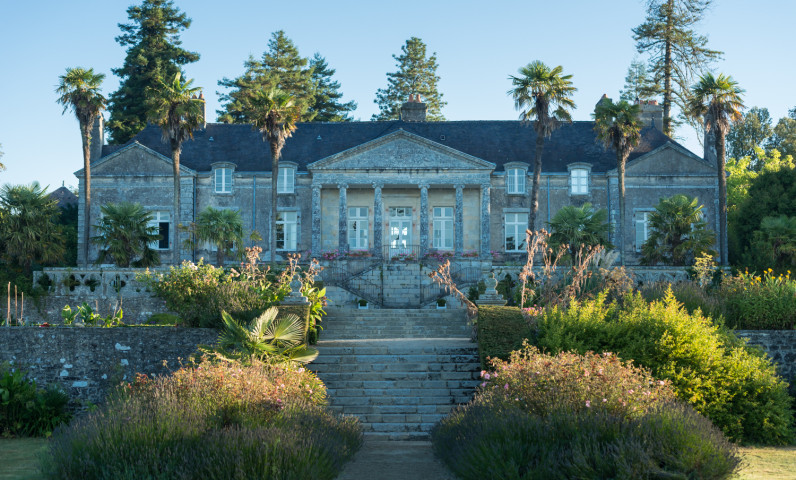
Facade of the castle
The current facade of the castle dates from 1823, following work by Emmanuel Harrington to give it a Palladian style.
This façade eliminates the 15th-century dwelling, to which a west wing was added in the 1760s.
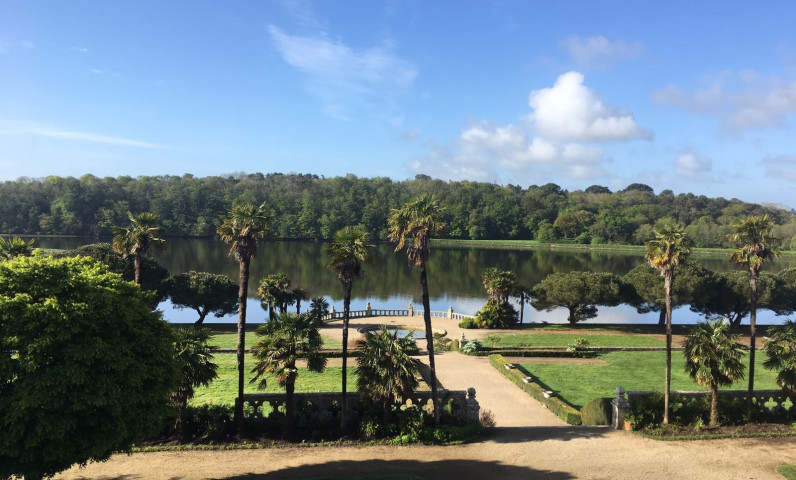
Terraces
Completely restored, the structure of the terraced gardens is of rare importance for the period in which it was built in the 17th century.

Vegetable patches
The vegetable patches have been under restoration since 2018. The decision was taken to restore the beds gradually.
The first two beds on the third terrace were restored in 2018, followed by two more in 2019.
In 2020, the number of beds on the third terrace will be increased to six.
The water irrigation system for this terrace was installed and the first espaliered fruit trees were planted along the wall between the second and third terraces.
In 2023, the last two flowerbeds on the third terrace and the central esplanade were restored.
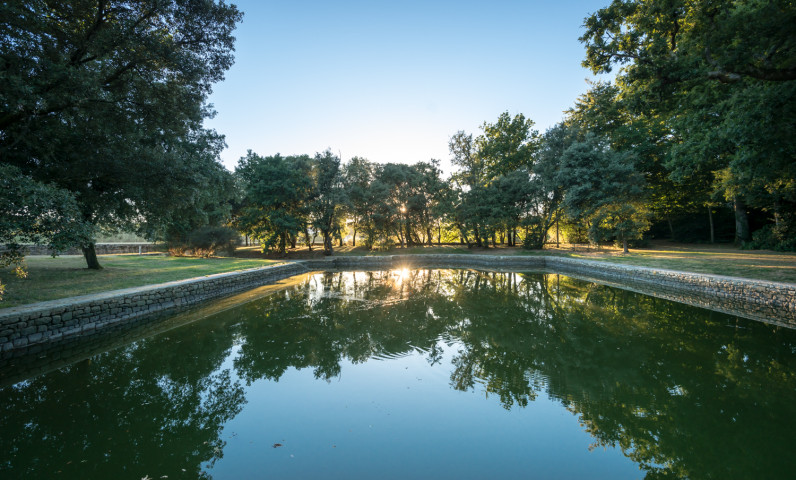
Neptune basin
This basin was gradually ruined by time and the contours collapsed. Very minimal remains of the wall were still visible before it was restored.
In the centre of the basin, there was a pedestal with a statue of the sea god Neptune perched on a dolphin, from which a jet of water flowed.
Here again, symbolism played a part in the choice of this statue: Neptune, the god of the sea, was chosen for this basin because it was fed by the Odet, itself subject to the influence of the sea at high tide. At high tide, the sea invaded the Odet and then, via a canal, this salt water entered the basin where it was held back by a bung until the next tide. Today, it fills up again during the tides when the flap gate is opened.
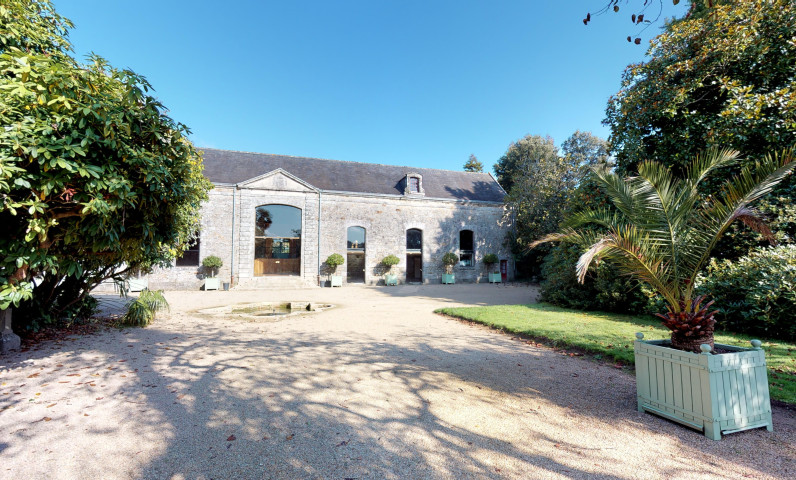
Facade of the Orangery
The orangery was built in the second half of the 18th century by Monseigneur de Farcy de Cuillé, following on from a first building perpendicular to it, traces of which can still be seen in the walls. The "double mirror" pool in front is the only one left after the French Revolution.
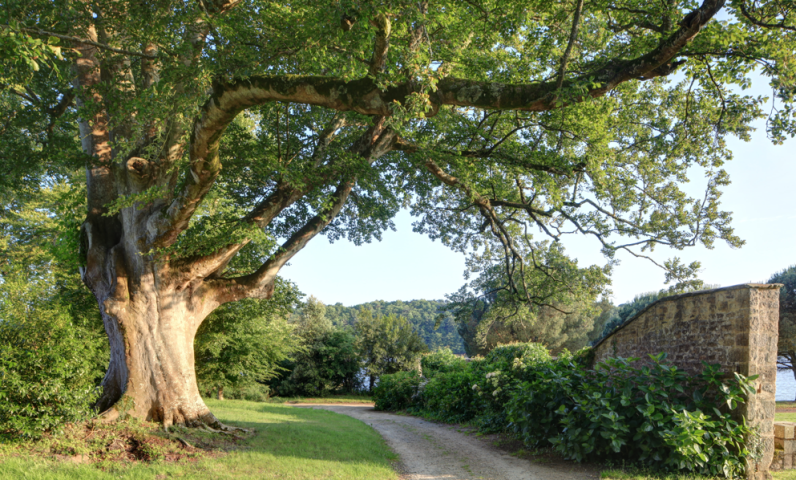
Arboretum
The Arboretum was gradually built up in the 19th century, first by Hermine de Kerret and then by her daughter Geneviève de La Sablière.
Brittany played an important role in the development of arboretums, as the region's oceanic climate allowed many exotic varieties to adapt well.
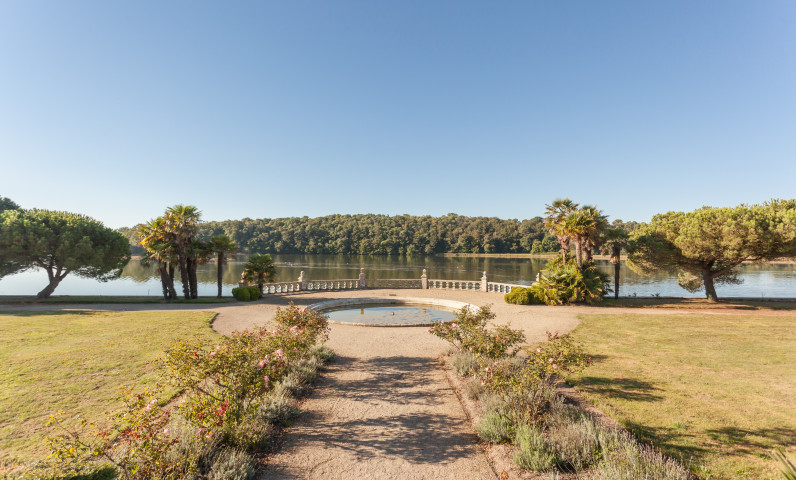
Dolphin Basin
A central feature of the gardens, the Dolphin Basin , destroyed during the French Revolution, was restored in 2005.
A Dauphin once sat at its centre, with a jet of water some 5m high.
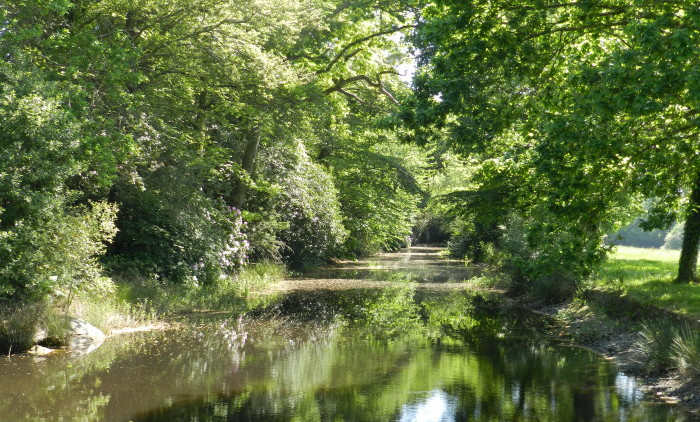
The large canal
The canal was built in the 17th century for both decorative and functional purposes.
Decorative, thanks to its great canopy of greenery 270 metres long, 12 metres wide on one side and 4 metres wide on the other. This architecture creates an accelerated perspective that makes it seem even longer. Functional, because it was supplied with water by a stream, which fed the pools on the terraces by gravity.
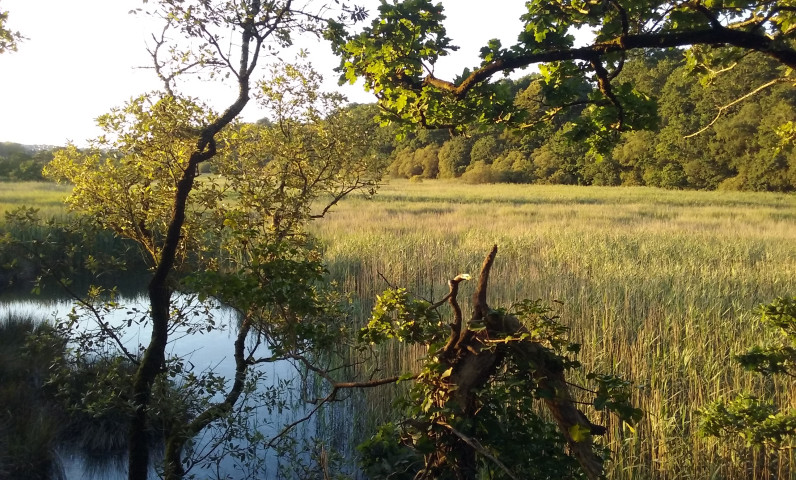
Neptune wood
The Neptune wood walk takes you for a 1.3km stroll along the stream to the fountain, then on to the old gatehouse and back along the dyke, where you can walk alongside the Odet and enjoy a unique view of the reclamation area, a polder built from 1839 by Charles de Kerret.
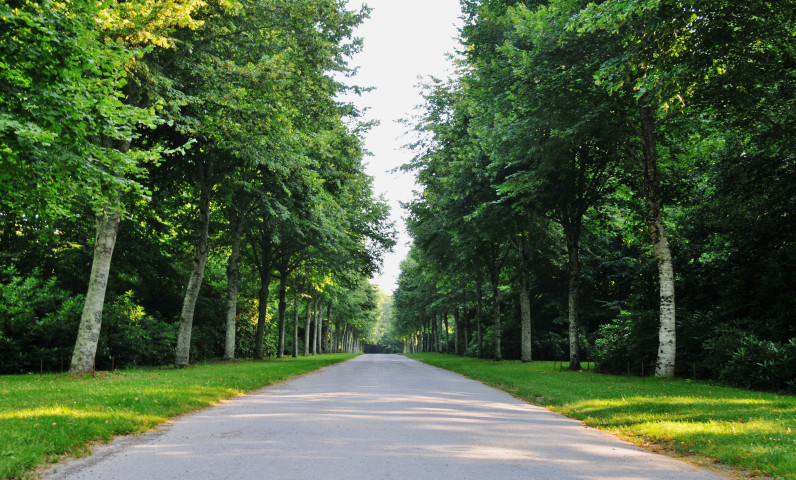
Park pathways
To access the gardens, you will have the opportunity to walk along the estate's avenues. You'll first take the Kerbabic avenue, with its old oak trees planted in the 18th century by Monseigneur de Farcy, then head down the main avenue, which was replanted with lime trees after the 1987 hurricane.